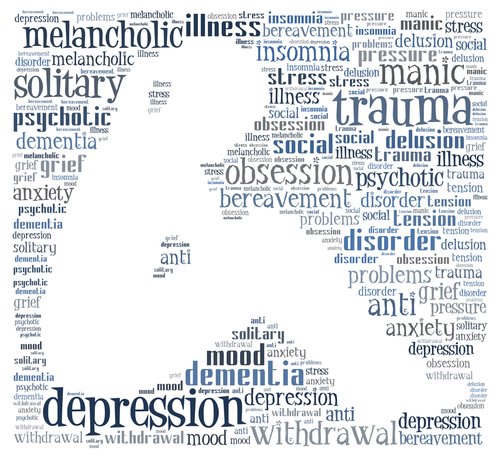Hypnotherapy Best Practices: Healing Trauma Without Re-Traumatizing
Hypnotherapy Best Practices: Healing Trauma Without Re-Traumatizing
 Working with trauma in the Heart-Centered Hypnotherapy model is always careful to avoid re-traumatizing the individual. That does not mean, however, avoiding re-experiencing the trauma fully.
Working with trauma in the Heart-Centered Hypnotherapy model is always careful to avoid re-traumatizing the individual. That does not mean, however, avoiding re-experiencing the trauma fully.
Hypnotherapy and the Release of Past Traumas
In the therapeutic process of deep healing and release of past traumas, the three most important elements are:
- The energetic somatic release of the painful emotions, which in turn releases the shock and body armoring embedded in the body’s musculature and nervous system.
- Containment of the process and of the client’s energy. The hypnotic trance is induced, managed, and terminated all in an orderly way. We titrate the emotions through the extinguishing process. We help them to create a safe resource state with anchors that they can always return to and use as a refuge from overwhelm. Ego strengthening is begun before the therapeutic part of the session, and continued throughout with corrective experiences of empowerment. There is an agreed upon signal to use if they wish to interrupt the process or take an intermission: “1, 2, 3, Stop”.
- The corrective experience. They abreact feelings bringing in the adult to express for the child what the child could not express at the time of the trauma, thus overcoming early inhibitions. Their experience is legitimized. They learn to attribute the abusive behavior to the abuser, not accepting blame themselves, and to discriminate between self-identity and introjected qualities taken on from others. They reconnect memories and emotions to events, giving meaning to past events that were experienced as bewildering.
Louis Cozolino (The Neuroscience of Psychotherapy, 2002, p. 27) has a number of suggestions for how to facilitate neural integration in psychotherapy. He proposes that neural growth and integration in psychotherapy may be enhanced by:
- The establishment of a safe and trusting relationship.
- Gaining new information and experiences across the domains of cognition, emotion, sensation, and behavior.
- The simultaneous or alternating activation of neural networks that are inadequately integrated or dissociated.
- Moderate levels of stress or emotional arousal alternating with periods of calm and safety.
- The integration of conceptual knowledge with emotional and bodily experience through narratives that are co-constructed with the therapist.
The first item speaks for itself: without feeling safe, no client is going to risk the vulnerability of working to heal trauma. The second item means that we need to address all the ways individuals process information. Some people are visual, some are auditory, some kinesthetic. In facilitating a session, we obviously don’t want to expect a non-visual person to “see” or a non-kinesthetic person to “feel”. We emphasize the narrative of experience with someone who does best with verbal language, while we utilize the physical with someone who does best with ‘hands on’ experience. Some people relate literally, others to symbolic or poetic metaphor.
The third item is crucial for effective healing. Cozolino (p. 46) states that “all forms of therapy are targeting dissociated neural networks for integration.” We engage the person as they were at the time of the trauma, which means some of their processing was not functioning properly. In a moment of trauma, the hippocampus goes offline. It is the brain structure instrumental in the synthesis of experiences which provides a conscious structure, context and a time stamp to the experience in the process of memory encoding. In traumatic states, Broca’s area, a circuit of interaction with other brain areas that plays a vital role in the production of language, located in the left hemisphere, may be inactive. So trauma resolution involves re-experiencing the trauma with corrections so that the hippocampus can understand context (that particular man, but not all men, are abusive) and time-stamp the experience (prevent a memory in the past from seeming to float in time and invading the present). We want to encourage the person to speak her truth and verbalize her feelings in order to activate the Broca’s area of her brain during a re-living of trauma. Here we are activating both the fear circuits and language circuits in ways that enable clients to reorganize their damaged neural connections.
The fourth item is commonsense, really. We all have limits to how much intensity we can tolerate, and when we have reached that limit, it is time to take a break. We ‘take a break’ by treating shock, allowing quiet time for reflection, helping the client find internal resources, nurturing the client with external resources, and attending to his overstimulation. We ‘take a break’ so that we can then return to disturbing material when affective regulation is under better control, and there is more capacity for an integrated brain response. Psychoanalyst Fred Pine calls this “striking while the iron is cold” because it delays the intervention from a moment when the conflictual issues are bubbling over and the client is not able to handle it (Developmental Theory and Clinical Process, 1985, p. 153). The therapist must be careful, however, not to delay “striking while the iron is hot” (when the timing is right for the issue to be confronted) as a rescue of the client who doesn’t need rescuing or as a means of avoiding therapeutic work that is personally challenging for the therapist.
And the fifth item on Cozolino’s list means that we must reach our clients in their physical and emotional experience, as well as their mental or cognitive understanding. Talking alone is not sufficient to heal trauma. The memories are carried deep in the unconscious, embedded in the body, recording “fears set down at a young age in the amygdala, the one part of the brain that never forgets. That's why therapy is seldom successfully done in a session or two, and is never simply a matter of ‘explaining’ to people how irrational their thinking is, or how counterproductive their behavior” (Mary Sykes Wylie & Richard Simon, Psychotherapy Networker, Sep/Oct 2002, "Discoveries from the Black Box: How the Neuro-science Revolution Can Change Your Practice").
These procedures wrapped together in the Heart-Centered Hypnotherapy protocol are coordinated to actually help rewire the brain circuits that were damaged in early trauma. If you want to better treat trauma with hypnotherapy, then you're probably wondering how to become a hypnotherapist. Click here to learn more about our training and certification program.









